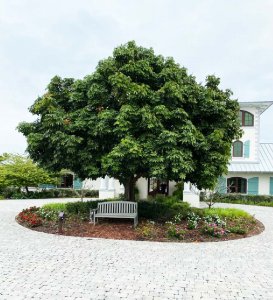Have you ever wondered the key issues facing street trees cultivation? If you are planning your new urban landscape design this information it’s very important.
First of all we it’s important to understand that street trees are a subgroup of urban trees, representing species with growth forms which are best suited for cultivation along pedestrian walkways and roads.
As a result, most cities and towns of the world are landscaped with street trees and shrubs. Given trees enhance the appearance of residential, commercial or industrial property areas; and to a small degree they prevent the loss of natural vegetation cleared for construction of buildings, streets and roads.
Therefore street tree plantings generally take place on public rights-of-way and are the responsibility of the local government public works department. Tree plantings on private properties abutting streets can be complementary to public landscaping.
Setting Legal Limits
Having this in mind, within the legal limits of incorporated towns and cities; a master street plan for landscaping, should specify the types of trees that can be planted. For this it’s important to have a clear idea on the key issues that affect street tree cultivation, regarding not only in public spaces but as well as on private property according to zoning codes. Permits are often necessary to plant or remove trees. Having in mind that regulations may prohibit the cultivation of noxious and potentially- invasive trees and shrub species. The over-all objective of these urban forestry rules is to create an attractive and fairly homogeneous urban landscape; to please both residents and visitors.
Key Issues
The key issues facing street tree cultivation are climate, soil and water. Typically, street trees represent a mixture of native species, and foreign species that adapt to the local urban area’s climatic regime. In the establishment of street trees, it is essential for planting that holes are deep and wide enough so that root growth is not impaired; the hole is should be filled with friable soil to assure its quick establishment. Because restricted root growth is one of the major reasons for street tree failures. Water from rainfall or irrigation is the third key factor. In other words this happens because trees are growing in areas where the surrounding soil is covered with impermeable materials; which limits the soil capture of rainfall and runoff.
Numerous configurations of street tree planting exist. Although, most common are individual trees in cutouts in sidewalks, where the soil surface sometimes covered with a metal grill. Or often rows of trees are in the grassy strips between the sidewalk and roadway. Also trees or shrubs in medians between opposing lanes of vehicle traffic; clusters of trees and shrubs in the center of traffic circles; and in median barriers at intersections.
Benefits of Street Trees
Street trees are multifunctional. In addition to their aesthetic impact on the urban landscape, they provide shade to sidewalks and create slightly cooler microclimates for pedestrians; they also act as a beneficial windbreaks in certain situations and function to reduce road noise pollution. Median plantings in divided roadways reduce oncoming traffic headlight glare. Trees also provide environmental services by creating a habitat for birds, insects and small mammals. Besides, they also improve air quality through their absorption of atmospheric carbon dioxide and the giving off of oxygen. Drawing carbon dioxide from the atmosphere helps slow global climate change.
The TreeWorld Blog “Urban Trees” provides guidelines for selection of appropriate street trees and the individual plant descriptions, it also identifies and recommends the most suitable ones.






